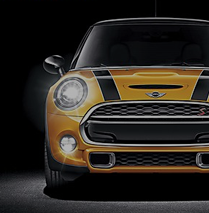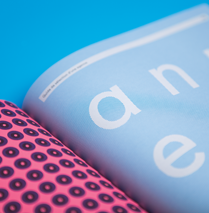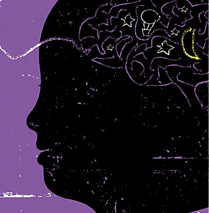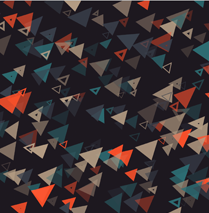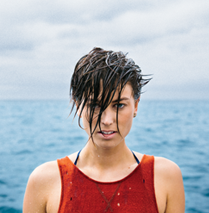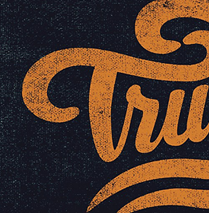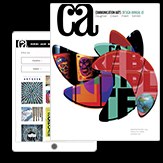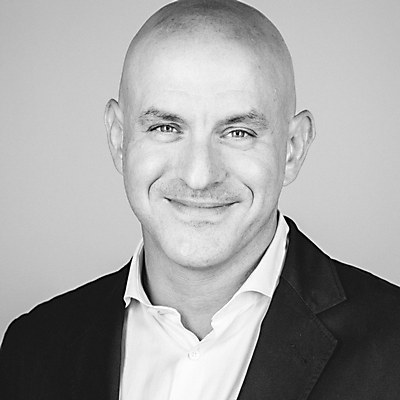How did you get started in digital design and learn the necessary skills to enter the industry? Twenty-five years ago, with a hacked version of Photoshop and a desire to get skate photos online. I started designing before I even really understood what being a designer was.
My career began in e-commerce during the dot-com era, when a big product design decision was moving from 800-by-600 to 1024-by-768 pixels. I was “good enough to resize graphics,” which meant I wasn’t good at much yet. Things really took off during the Flash heyday after meeting Ian Coyle and joining a studio in Denver called FL2. Not long after, we added Matt Fajohn to the mix. FL2 was where I won my first FWA Site of the Day. This was a time when Ffffound was still king, and the term “product designer” was reserved for those making physical objects. FL2 was featured several times in Communication Arts back in the late aughts for various websites. Vision Streetwear, I believe, was featured in print in 2008.
Congratulations on recently accepting a position as partner and head of design at digital innovation studio Siberia! What are you going to be doing in this position, and what do you look forward to working on? After leaving Firstborn, I took a four-year walkabout that led me in-house as head of design at both Twitter—via Ueno—and then pizza-ordering service Slice. This journey made me realize how much I missed making things, to ship work I was proud of. I longed for the energy and pace of agency life, the variety of technical, brand and consumer challenges where craft is still king. Hell, I even missed clients!
At Siberia, our mission is to “chart and navigate a future where technology has improved, but not over-optimized the human experience.” As a partner on the design side, I get to set the tone for what that means from a design perspective. I work to build out our already strong roster of design and innovation talent and find ways to nurture that network. To all the designers I know, get at me, and let’s work together on something rad again.
I’m also back in the pixels, working with an amazing team on (and at) Ford and the James Beard Foundation—two super exciting brands with radically different design and technology needs.
Tell us about some of your favorite design projects that have defined your career. How did they change your perception of what design can accomplish? Some old-school Flash work from the late aughts comes to mind, especially from my days at FL2. Projects like the FL2 site itself, which garnered a lot of hype, and Vision Streetwear, which I believe got us our first print feature in Communication Arts.
At Firstborn, a standout project was for UNIQLO. We discovered an exploit on the then-recently-launched Pinterest and created a campaign around it. Essentially, we hacked Pinterest. We called it Pinstorms, and it went viral, winning numerous awards and a Gold at Cannes.
More recently, the north-star vision work for both the revenue and enterprise solutions teams I led at Ueno played a big role in getting us acquired by Twitter. This marked the beginning of my client-side journey, which later took me to Slice, where I worked on restaurant tech.
Moving to an agency from working in-house at places like Twitter, what are some of the advantages and disadvantages you see in both work environments? Spending time in-house was beneficial. I think it’s good for anyone, especially design or creative leaders who have spent a large part of their careers in the agency space. It exposes you to the specific challenges faced by internal teams, often battling against fiefdoms. If you think bureaucracy is bad in holding companies, wait until you see it inside a big tech company.
In-house operations differ radically from agency work. At a good agency, high levels of craft and efficiency are critical. Efficiency is not a metric anyone cares about in-house. The pace and level of craft in agency work—from design concept through production and QA—is light years faster than in-house, with a few exceptions in small startups.
In-house product designers have more autonomy, which can shock agency designers transitioning to this environment. They must make their own plans and schedules, and a lot of additional work gets added to their plate—work they may know little about. They’ve likely had a producer, project manager and strategist handling many responsibilities that now fall to them.
Going in-house was crucial for me as it reminded me of the client realities I had forgotten after fifteen consecutive years on the agency side. Many agency leaders may not realize the amount of work it takes to get approval for a project to go to RFP, let alone ship once completed by an agency partner.
With the rollout of AI that has proliferated the internet—even digital design services can generate websites now—how do you see this impacting the way we approach web design? I love working with AI. It plays a daily role in my life, both at work and outside of work.
Designers and non-designers alike need to embrace AI to sharpen their skills. It can help you be a better writer, sharpen your business acumen and expand your capabilities. Used appropriately, it will make you better and help you in areas where you may be deficient.
AI will dramatically increase the quality of what we consider average. It will force those who are great to become even better. Most will settle for this newly elevated average, but many will not. We should see some amazing things due to the innate human desire to surpass what came before.
How do we bring delight back into digital experiences when trends in design have pushed systems and optimization? I could wax poetic here, but nothing will change until the metrics by which the deciders make their decisions change, especially inside the corporate monolith.
At the macro scale, it’s a reward-system problem. Defining delight or quality is difficult because it’s often a matter of taste—something in short supply—especially early in the design phase. It has always been, and forever will be, hard to quantify with objective certainty.
What is the most exciting work in interaction design you’ve seen recently? It’s hard not to shout out Perplexity and the team at OpenAI. The pace and quality of craft they are working at is incredible, across a multitude of modalities. Executing both at the broader level of crafting holistic, net new experiences and at the microinteraction level—haptics, voice control and playback, UI animations—the whole nine yards! It’s pretty awesome to see.
Very recently, I was super impressed by the work the team at Rivian is putting out. Their web work is clean, clear, and solid. Their in-car UI and content work are fantastic. I love that they had the chutzpah to use cel-shaded 3D in their infotainment system. It’s awesome. Did they need to go there? No. Did they? Yes. Because they want to be great. And to do that requires bold decisions, ones that require taste over metrics.
What personal creative projects or hobbies keep you refueled in your free time? I’m at the beginning of a major remodel and gut renovation of a historic industrial loft in Lower Manhattan that was built in 1867. It’s the ultimate design project for me. The layers of complexity and detail are extremely interesting. Conceptually, designing and building a home has many similarities to building a great digital product. The fundamentals are the same. The big difference is that the decisions you make carry more impact. They are, quite literally, concrete. Immutable.
Definitely not the place for an MVP-type approach. Actually, there is never a place for an MVP—build things you care about.
Do you have any advice for people starting out in the profession today? Start by giving a fuck. I hope you actually like design. That’s critical because it propels you forward and will make you stick with things when the industry shifts. And it will. Figure out how AI can be part of your toolkit. It should augment your process, not be your process.
Focus on your writing. Fall in love with it. It will help you more as a designer than any Figma tip or trick.
Here’s something nobody ever tells designers (or creatives alike): as your career progresses, save money. Why? So you can say “fuck off” when you have to later. Investing isn’t lame; it’s smart. Invest early so you have the flexibility to do what’s right for you later. Now, late in my career, it’s allowed me to make principled decisions and say no to bullshit when I needed to. And it gave me time to find what’s right for me. ca


